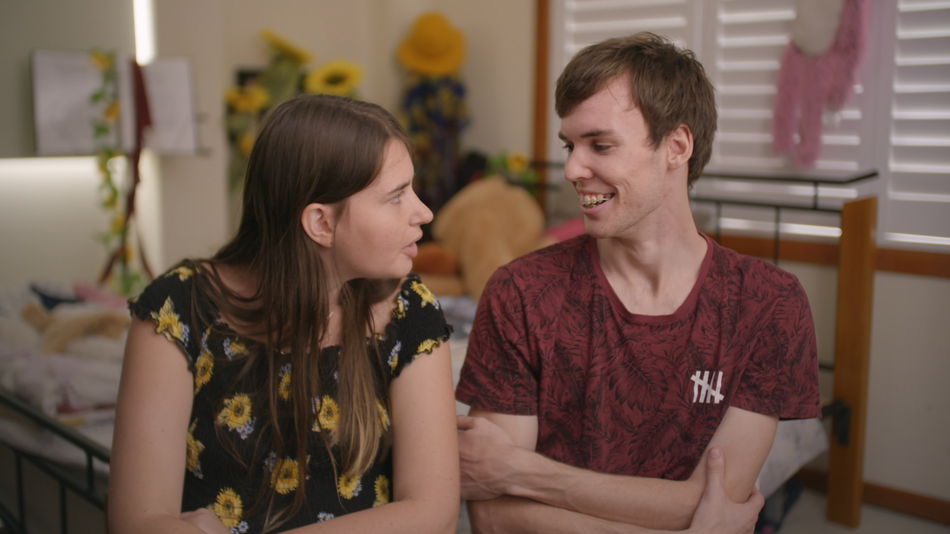
Image: netflix
I’ve seen hundreds if not thousands of hours of reality dating TV. And yet, through all the Neil Lane diamonds, pod-to-pod confessionals, and 90-day test runs, nothing has made me feel as invested and as good as fast as Love on the Spectrum.
Debuting its first season globally today, Netflix’s latest “will they, won’t they” gem follows a cast of autistic singles and couples as they navigate the unpredictable world of adult dating. The tone is similar to Truly (formerly Barcroft TV) in that it blends staid narration with vibrant subjects, eschewing the pageantry and competitiveness of genre mainstays for a more traditional docuseries approach. There are no gimmicks, no stunts, no promises of drama or attempts to instigate it. Just a handful of people looking for love, like everyone else.
This is a show about finding “the one” — a task that’s difficult, confusing, and highly personal for anyone who undertakes it.
That most lonely hearts in this show have one or more disabilities is a thematic through-line Love on the Spectrum explores frequently and frankly. Still, this narrative doesn’t appear to be aimed at spouting platitudes or generalizations about neurodiverse individuals and their capacity for intimacy. Nor is it an exploitative spectacle, a misguided instance of inspiration porn, or a chance for studios execs to pat themselves on the back.
No, Love on the Spectrum is all about uniqueness and individuality, focusing on the possibility of love for each of its characters as they appear and present onscreen. This is a show about finding “the one,” a task that’s difficult, confusing, and highly personal for anyone who undertakes it — and always makes for good TV.
Guided by relationship counselor Jodi Rodgers and the off-camera voice of director Cian O’Clery during interviews, Love on the Spectrum’s LGBTQ-inclusive cast is introduced gradually throughout the season and, for the most part, do not intersect. Though each participant is in their 20s, is autistic, and has at least some interest in a romantic relationship, the emphasis of this series isn’t on the abstract idea of a group looking for avenues towards happily ever after, but on these specific people’s pursuits within their local communities.
[embedded content]
During the series’ five episodes, we meet people like Michael, a Gilligan’s Island-loving, tell-it-how-it-is toy collector in search of the perfect woman; and Maddi, a tall, video game-obsessed joke machine who could take or leave the love thing altogether. We also spend time with established pairs, like Ruth and Thomas, who are exploring the ins and outs of long term commitment around their four-year anniversary.
Installment by installment, we learn more about what it means for our stars to be loved how they would like and what kind of love they want to offer in return. Successes and rejections come in equal measure, with dates often ending in promises of friendship and hopeful thoughts of other fish in the sea. Private moments are made especially intimate by certain cast members’ willingness to be ferociously, unapologetically themselves. It’s an infectious blend of authenticity and fairy-tale idealism that captures everything about love we find so intriguing.
Love on the Spectrum is an affecting show that paints telling portraits of human connection that are so lovely, so moving, and so wholly satisfying, it’s hard to imagine reality dating being done any other way. Sure, I still want the rose ceremonies, pseudo-social experiments, and chaotic in-fighting in other franchises. But Love on the Spectrum is perfect as is.
Love on the Spectrum is now streaming on Netflix.
